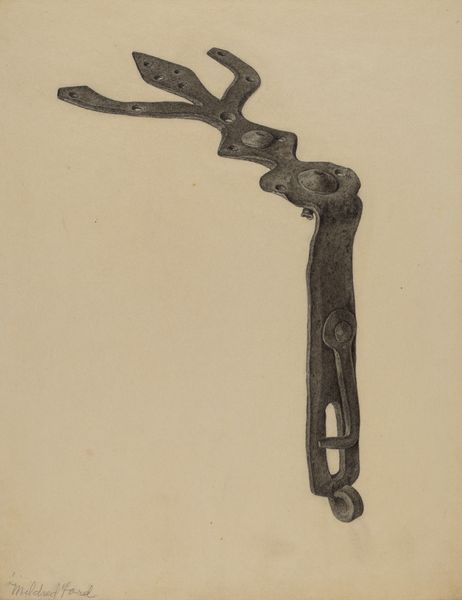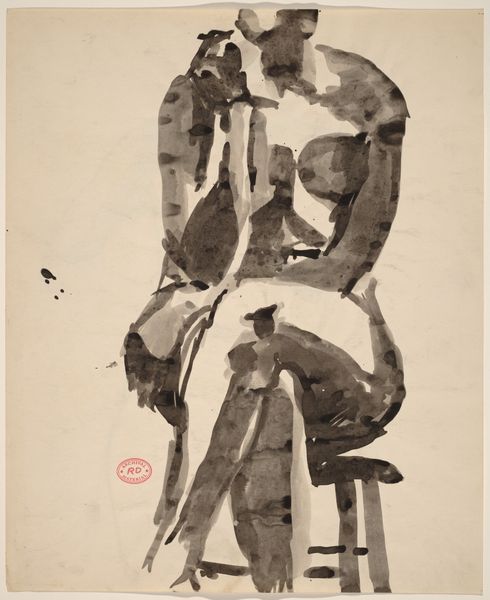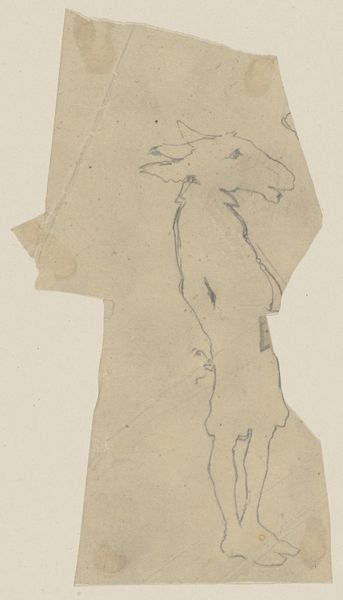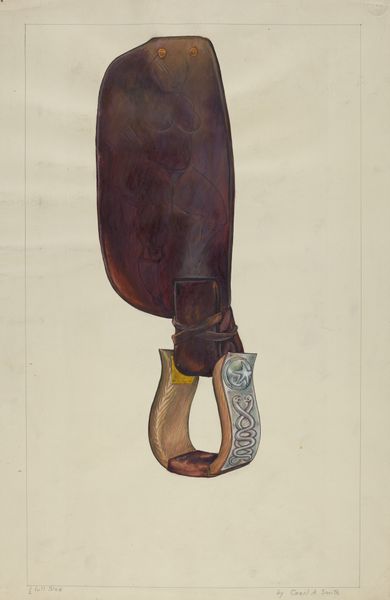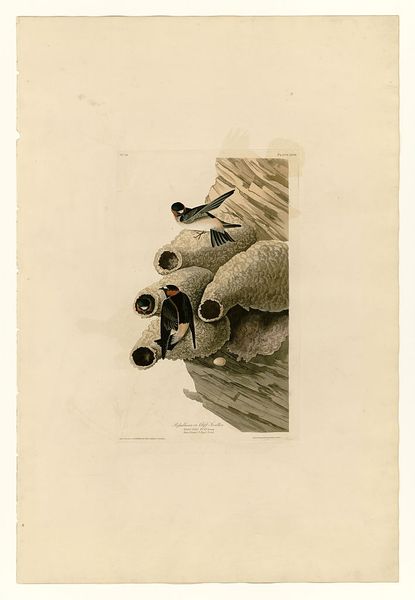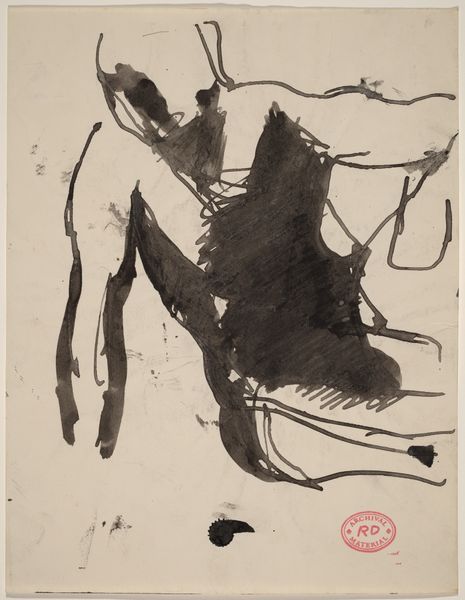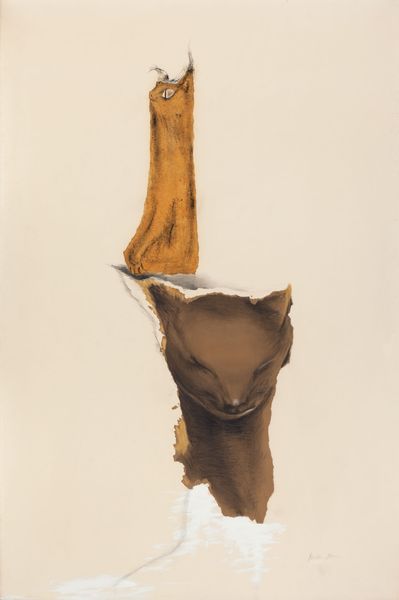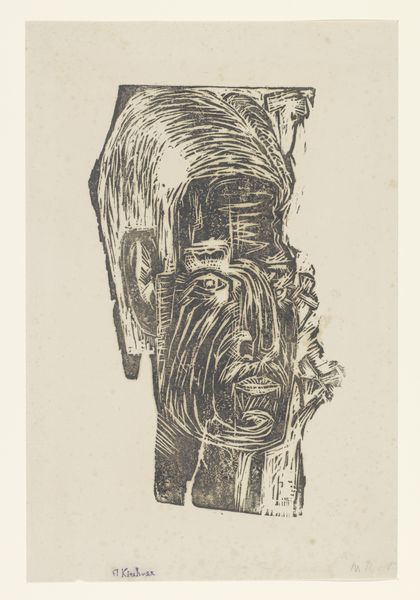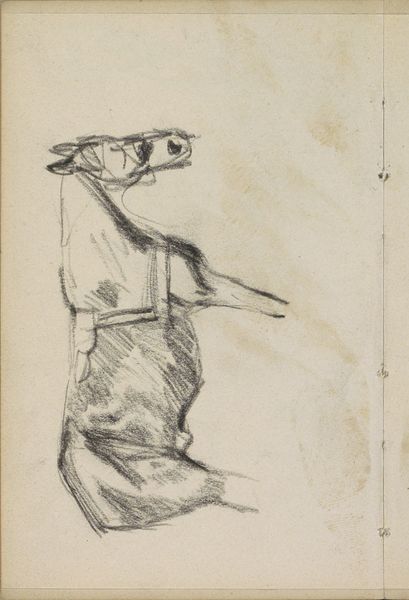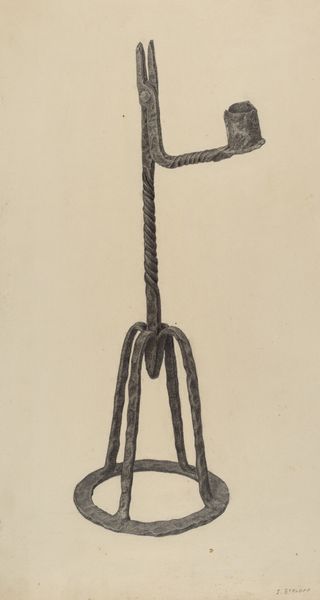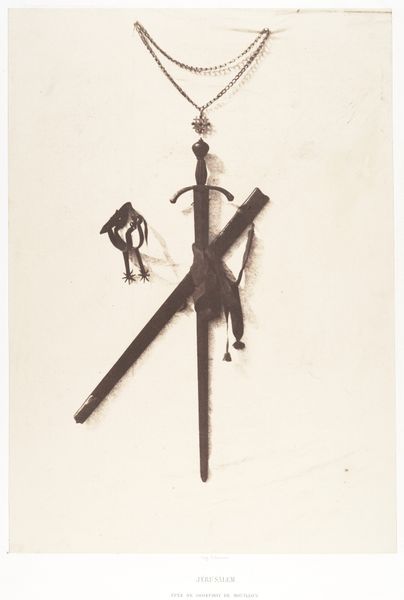
drawing, watercolor
#
abstract-expressionism
#
drawing
#
form
#
watercolor
#
abstraction
#
line
#
watercolor
Dimensions: overall: 27.9 x 21.6 cm (11 x 8 1/2 in.)
Copyright: National Gallery of Art: CC0 1.0
Curator: What strikes you first about this untitled work on paper by Franz Kline, created sometime in the 1940s or 50s? Editor: There's a stark tension. That vibrant, almost aggressive, red rectangle on the left clashes fiercely with the muted, amorphous forms to its right. It feels unbalanced, almost violently so. Curator: Kline's compositions, even in his smaller works, often suggest struggle. In this abstract drawing, he uses watercolor to evoke not just form, but the emotional intensity associated with those forms. Consider how the downward pull of those dripping shapes speaks to feelings of collapse. Editor: The watery quality amplifies that sense of collapse, doesn't it? And yet, there's also a curious grace in those tendrils. They resemble limbs, reaching, even as they disintegrate. Kline really manipulates the push and pull between presence and absence. Curator: Absolutely. Think about how cultural memory might perceive similar forms: ruined towers, skeletal remains. There is perhaps also an element of destruction or purging present with the large forceful brush stroke to the left. Even in its simplicity, it hints at much more than initially meets the eye. Editor: Speaking of simplicity, the reduction of form allows us to really dissect the interaction between the pigments and the paper. Kline exploits the watercolor's transparency and unpredictable nature to create depth and dynamism. The splatters add another layer of almost chaotic energy to the composition. Curator: This artwork may reflect a specific psychological tension in Kline’s practice. Despite his works being rooted in form and visual energy, they also carry weightier considerations of the body's position during times of conflict and destruction. It certainly highlights how something simple, like the relationship of shape and hue, can imply the nature of experience itself. Editor: It seems Kline presents his emotional experience and leaves us to make our own interpretation of it. Curator: Yes, an almost unsettling piece of work. It certainly holds a space within art historical consideration by allowing abstract imagery to convey complicated experiences. Editor: A compelling interaction between medium and the message, creating an emotional reaction by means of simplicity.
Comments
No comments
Be the first to comment and join the conversation on the ultimate creative platform.

